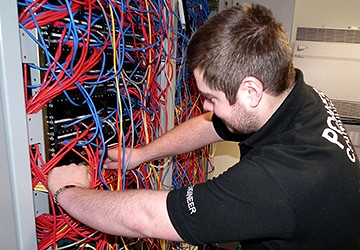
Introduction:
In today’s fast-paced world, where uninterrupted power supply is crucial for various industries, businesses, and households, generators play a vital role in ensuring continuity during power outages. However, the reliability of a generator heavily depends on regular servicing, maintenance, and, in some cases, timely removal. In this blog post, we will delve into the significance of generator servicing and maintenance, as well as the considerations involved in generator removal.
Generator Servicing and Maintenance:
- Prolonging Lifespan: Regular servicing and maintenance significantly contribute to prolonging the lifespan of a generator. Just like any other machinery, generators undergo wear and tear over time. Routine check-ups and servicing can identify potential issues early on, preventing major breakdowns and ensuring the generator’s longevity.
- Optimizing Performance: A well-maintained generator operates at its optimal performance level. Regular oil changes, filter replacements, and thorough inspections of components contribute to the generator’s efficiency. This, in turn, ensures that it can handle the load requirements during power outages without any hiccups.
- Reducing Downtime: Unexpected generator failures can lead to costly downtime for businesses. Scheduled maintenance helps minimize the risk of unplanned outages. By addressing potential issues in advance, businesses can avoid disruptions to their operations and maintain productivity.
- Ensuring Safety: Safety is paramount when dealing with power generation equipment. Regular maintenance checks not only help identify and address mechanical issues but also ensure that safety features such as emergency shutdown systems are in proper working condition. This is crucial for preventing accidents and protecting both personnel and assets.
- Compliance with Regulations: Many industries are subject to regulations regarding the maintenance of backup power systems. Adhering to these regulations is not only a legal requirement but also a responsible practice to ensure the safety of the community and the environment.
Generator Removal:
- End of Life Considerations: There comes a point in a generator’s life when it becomes more cost-effective to replace it rather than continuing with repairs and maintenance. Factors such as outdated technology, increased repair costs, and declining efficiency may necessitate the removal of the generator.
- Environmental Impact: Responsible disposal of generators is essential to minimize their environmental impact. Generators often contain hazardous materials, such as oil and electronic components. Proper disposal procedures, including recycling and waste management, should be followed to reduce the ecological footprint.
- Upgrading Technology: Advances in technology result in more efficient and environmentally friendly generator models. Upgrading to a newer generator not only improves reliability but also allows businesses to benefit from the latest features, such as smart monitoring systems and improved fuel efficiency.
- Professional Removal Services: Generator removal is a specialized task that requires the expertise of professionals. Hiring a certified generator removal service ensures that the process is carried out safely and efficiently. Professionals can handle the disconnection, dismantling, and transportation of the old generator, while also providing guidance on the installation of the new unit.
- Documentation and Compliance: During the removal process, it is crucial to maintain proper documentation for compliance purposes. This includes records of the disposal process, adherence to environmental regulations, and any necessary permits obtained for the removal and disposal of the generator.
Conclusion:
In conclusion, generator servicing, maintenance, and removal are integral aspects of ensuring a reliable and efficient power supply. Regular maintenance not only prolongs the lifespan of generators but also contributes to safety, compliance with regulations, and reduced downtime. When the time comes for generator removal, careful consideration of environmental impact, upgrading technology, and professional services are essential for a smooth transition to a new and improved power generation system. By prioritizing these aspects, businesses and individuals can enjoy uninterrupted power while minimizing the environmental footprint of their backup power solutions.












